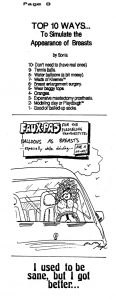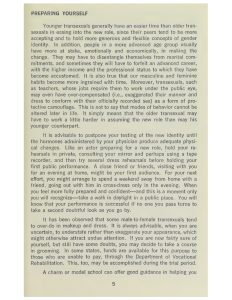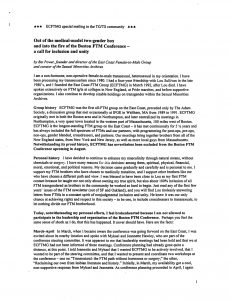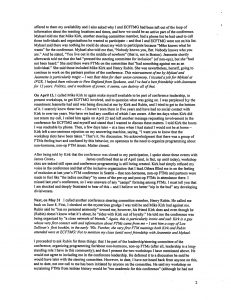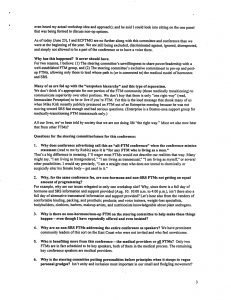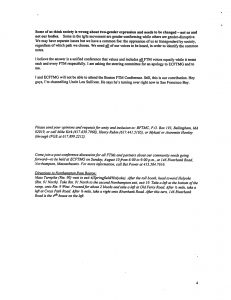Feeling at home in the body while trans is hard. That said, there are infinitely many ways trans people have found to feel more at home in their bodies.
- Definitions
- Document 1: Example of the Medical Model
- Letter from Ben Power: Resisting the Medical Model
- Cartoon from “Twenty Minutes” Newsletter
Some Helpful Definitions:
Pathologization: To view or characterize something as medically or psychologically abnormal. (Merriam-Webster).
Then, the pathologization of transness would be when medical institutions construct transness as something wrong, and which needs to be fixed.
The Medical Model of transness: when medical institutions with power define transness in a very binary way dependent entirely on medical interventions; care is offered only if the person agrees to prescribe fully to the “new” gender role they will take on— that is, the medical model seeks to erase trans existence by assimilating them into the patriarchal gender binary.
This is, of course, complicated by the many ways in which different bodies can be perceived as more or less assimilable/ acceptable.
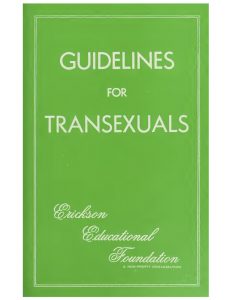
Content forecast: this document is an example of the medical model of transness (see definitions if need be).
Though the creators thought of themselves as trying to help trans people—with the funder of the Erickson Educational Foundation being a trans man himself—, they talk about gender in rigidly binary and bio-essentialist ways, with “transitioning” conceptualized as inherently linked to medical intervention. I offer this as an example of the medical model.
Selected pages from Erickson Educational Foundation “Guidelines for Transexuals,” 1974.
To be clear: There is no wrong way to be trans or gender nonconforming.
The problem does not lie in individual trans people’s decisions about their bodies.
Rather, the problem lies in 1.) restricted access to quality care, and 2.) the fact that, for most of the 20th century, (and still sometimes now) the interest that medical gatekeepers showed in learning more about hormone replacement therapies and what we would now call gender-affirming surgeries was driven by an interest in making transness and queerness disappear, not giving trans folks autonomy.
Letter from Ben Power, founder of the East Coast Female To Male Group, and archivist of the Sexual Minorities Archive to this day.
In this letter and “call to inclusion and unity,” Ben Power* details the experience of being pushed out of participating in the 1997 Boston FTM** Conference for his workshop “Transnatural” (about being trans and not wanting or being able to seek medical interventions).
“I support my FTM brothers who have chosen to medically transition, and I support other brothers like me who have chosen a different path and view.”–Ben Power
He goes on to ask critical questions of his community members (see pages 3-4). The reason I have selected this piece is because, importantly, it documents controversy. Namely, controversy produced by the the medical model of what is acceptably and unacceptably trans.
What does it mean for trans people to have different desires and experiences of feeling good or bad in their bodies? What does it mean for trans folks to take different approaches to interacting with doctors and the medical institution? What does it mean for some voices to be leveraged and others squashed out?
*I use his name as it is today, though it was different at the time of writing this letter.
**a term not widely used today/ thought to be offensive to many people, though I use it here to mirror the name of the conference at the time.
